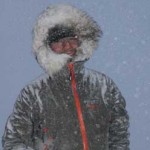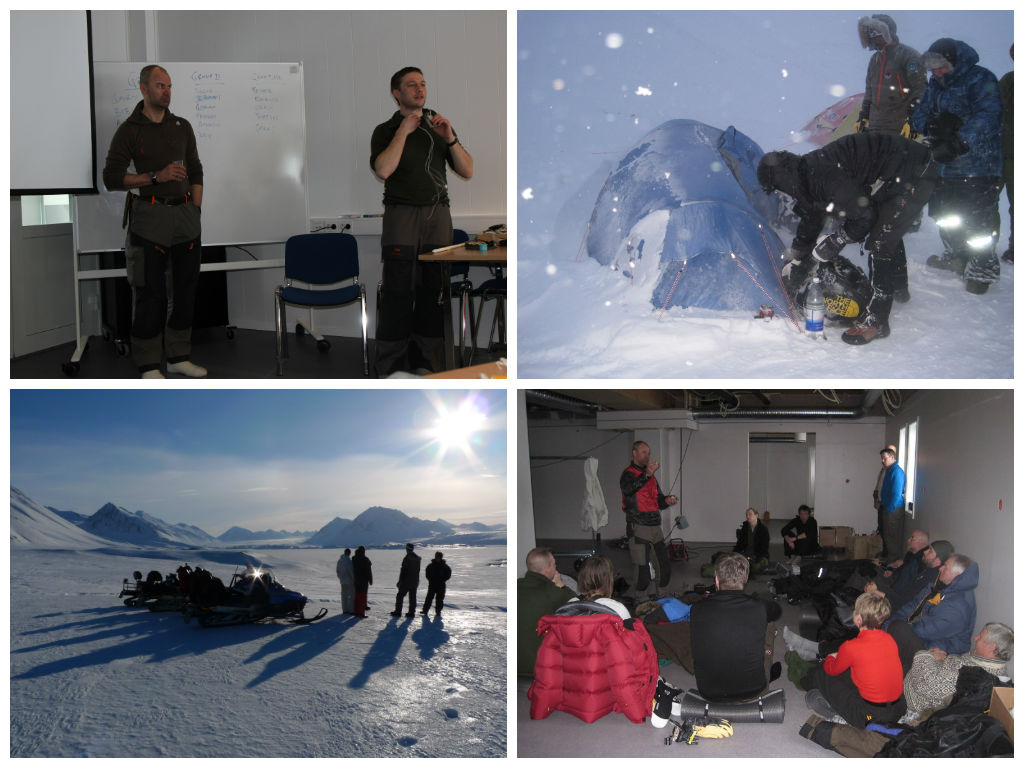Blogger: Andreas Møllerløkken 
The NTNU Barophysiology Group aims to promote safety and minimize the acute and long-term harmful effects of diving and other extreme environmental exposures. Our work covers the topics of both basic and applied research. Through a translational approach, we study animal models to provide novel and comprehensive knowledge of pathophysiological mechanisms. We also use human field and laboratory studies to obtain physiologically relevant data.
This week we arrange a course, “Enjoy the Cold – Health, Protection and Survival in the Cold – Adaptation and risk assessment of human activities in cold environments” in Ny-Ålesund, Svalbard. This course aims at giving people who are working and participating in activities related to cold environments proper training and insights on different equipment that exists which can be used to manage the different challenges one faces in the cold environment. Through a combination of lectures, discussions, practical work and use of equipment, the participants will gain an intimate knowledge on how to handle work situations as well as accidents.
The Arctic areas have become regions of global importance because of their enormous natural resources and their strategic position. These northern areas are cold, harsh and hostile to man. Working in them is difficult, expensive and demands high levels of technical, scientific, and physiological expertise. Cold weather exposure can cause immediate health problems. For people with ailments, cold exposure can lead to new symptoms, or aggravate those existing. Cold exposure may also cause pain and disease in healthy subjects.
A number of climatic factors are known to increase challenges related to work in the northern areas, such as temperature, wind, icing, the polar low, uncertain weather forecasts and polar night. In addition to climatic factors, regulation of body temperature is affected by activity, technical protective actions/systems and clothing. The climatic problems connected with activity in the arctic areas are not only limited to equipment and equipment function. Cold is one of the most dangerous environmental risk factors for man. Not only does the cold challenge day to day function in those prepared for such an environment, but if conditions become more extreme, then it may also challenge survival. Although the human body has a physiological control mechanism, homeostasis, to maintain a stable and optimal internal environment independent of a changing external environment, this mechanism is not protection enough in the sub-arctic areas. Man is totally dependent on personal protective equipment, established working procedures and training to perform the work within specified safety and efficiency limits.
Man is totally dependent on personal protective equipment, established working procedures and training
Increasing development and human activity in the Arctic environment calls for increased research focus on the appropriate applied human physiology in order to increase our knowledge on how the organism adapts to extreme environments.
It is well recognized that cold environments have negative health effects on the human body, but an important question is are there any increased health risks due to the physiological stress and decreased performance associated with survival requirements, for example having to wear heavy protective clothing constantly?
As diving is likely to be an important activity in these regions, the long-term health effects for divers who undertake the majority of their work in cold water should also be considered. More knowledge is needed to understand which processes come into play when the body’s ability to adaptation is exceeded, why one human reacts differently to another when exposed to the same environments and stressors, and how we can prepare ourselves to be protected against adverse health effects of exposures to extreme environments both in the short and long term.
In 1990 the course “Health, Protection and Survival in the Cold” was arranged at Svea, and this was the first course in a series of courses that have been held throughout the years since then. All in all, some 250 persons have participated the course since its beginning in 1990, to get a better understanding of the different elements one meets in extreme environments and how they influence our own physiology.
With the increasing activity in the arctic regions, research within the human physiology and its response in the cold environment is necessary and give bases for our course.



